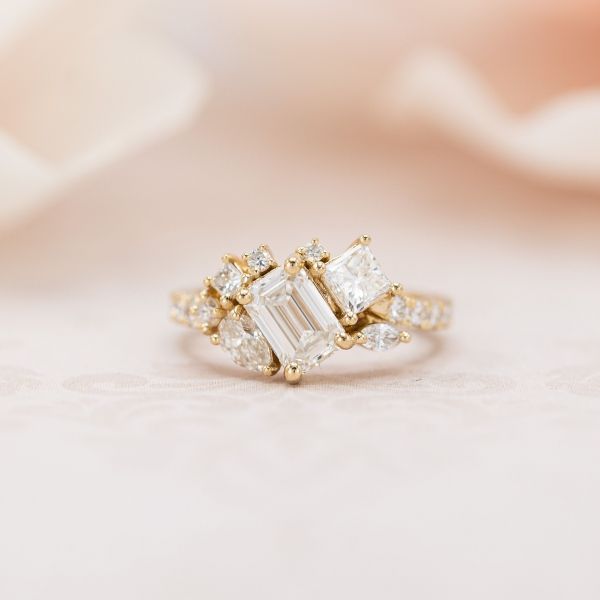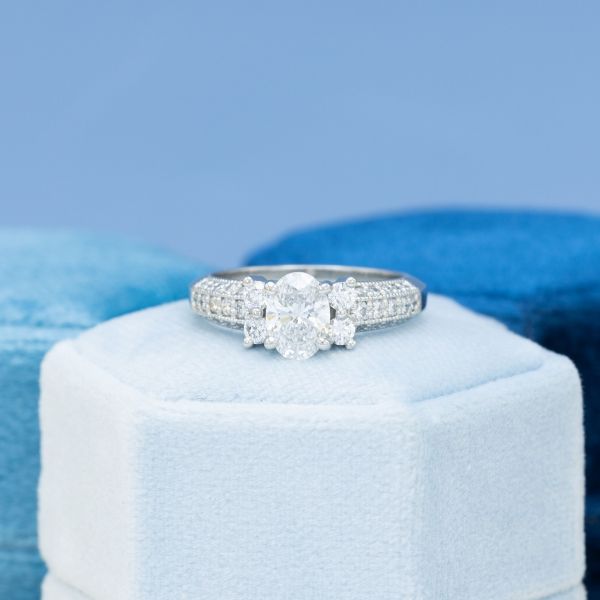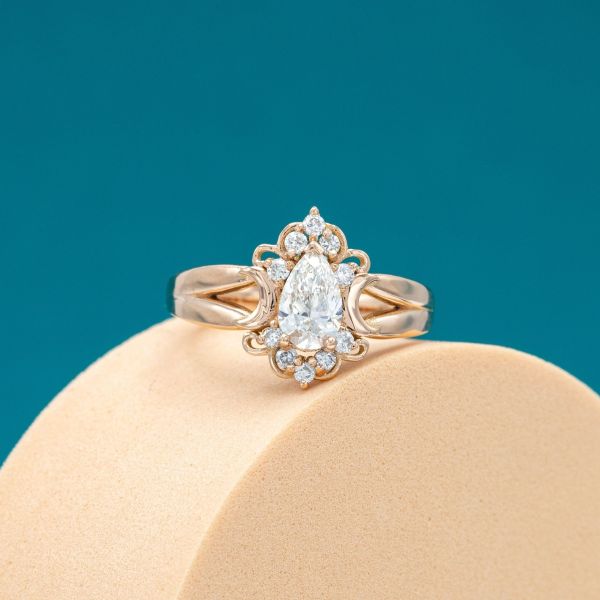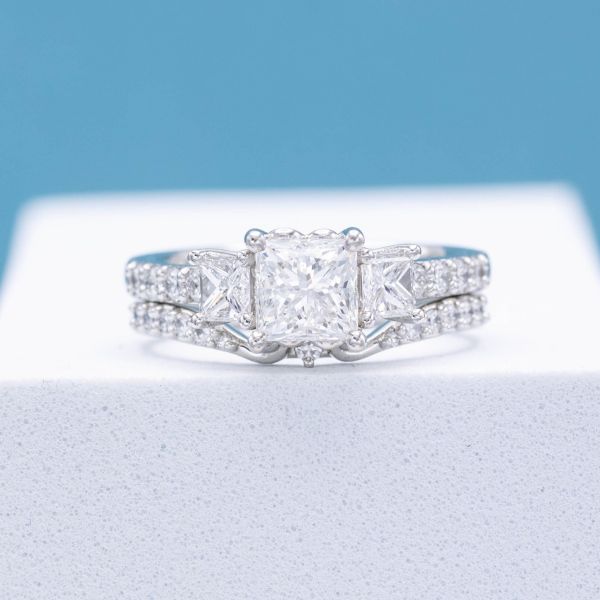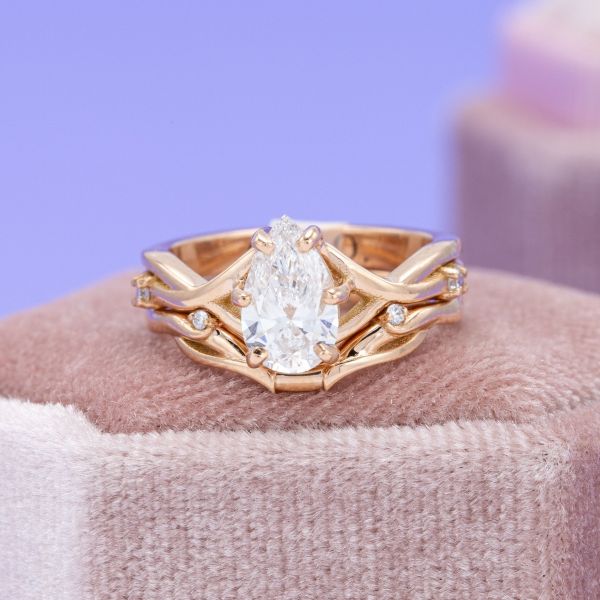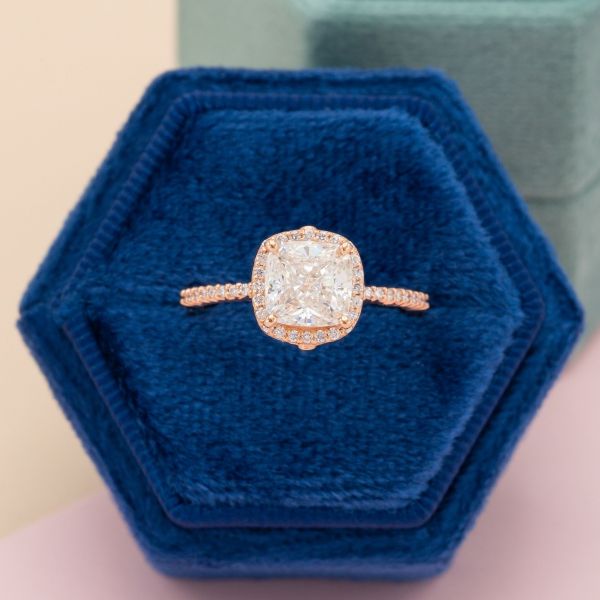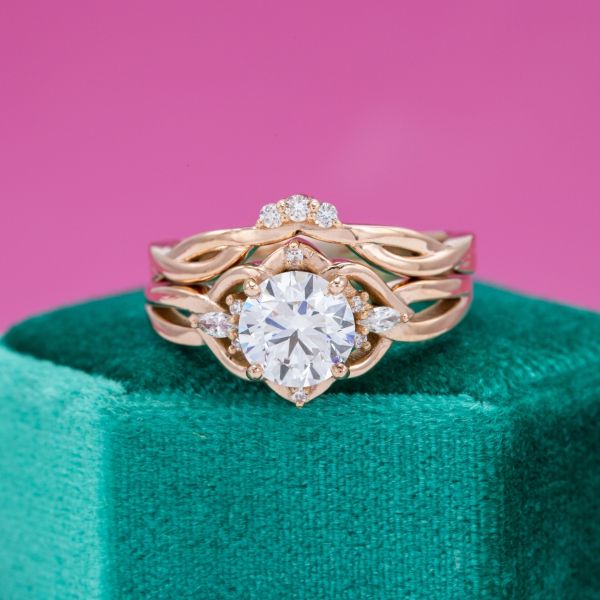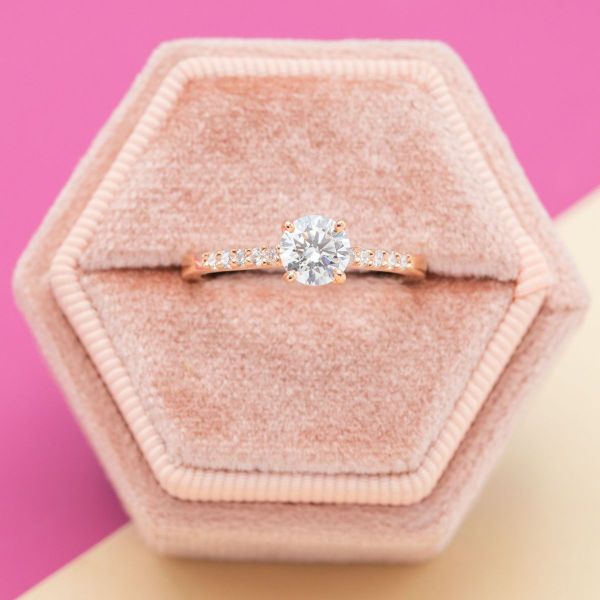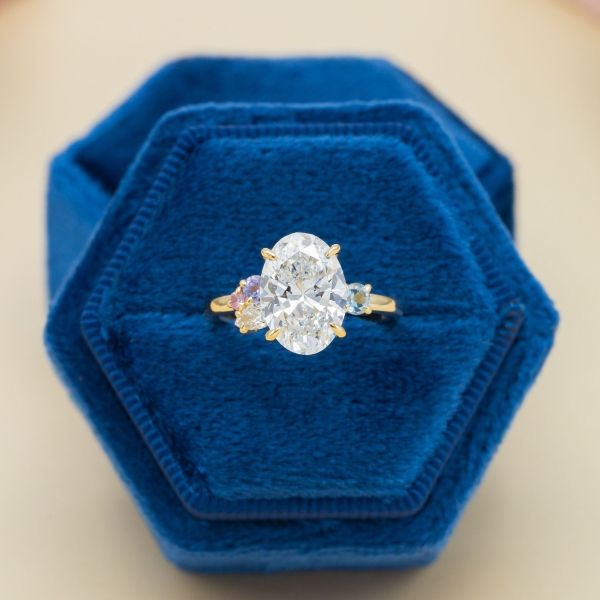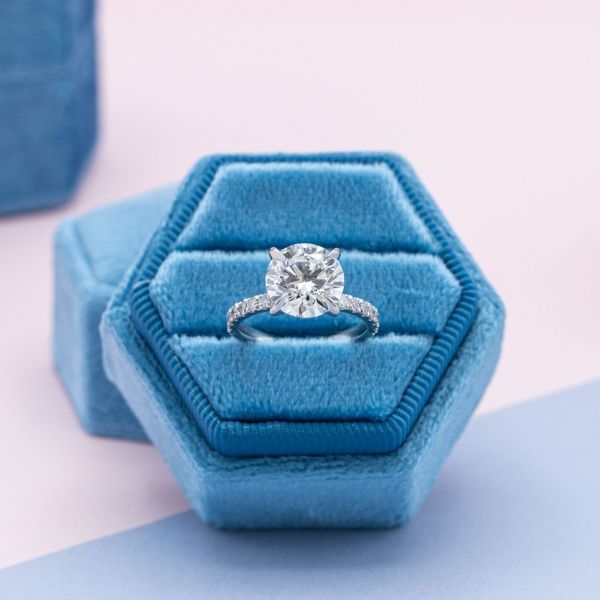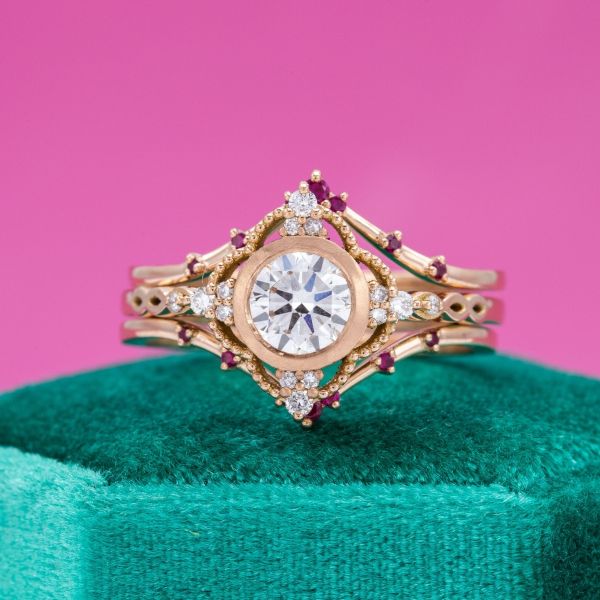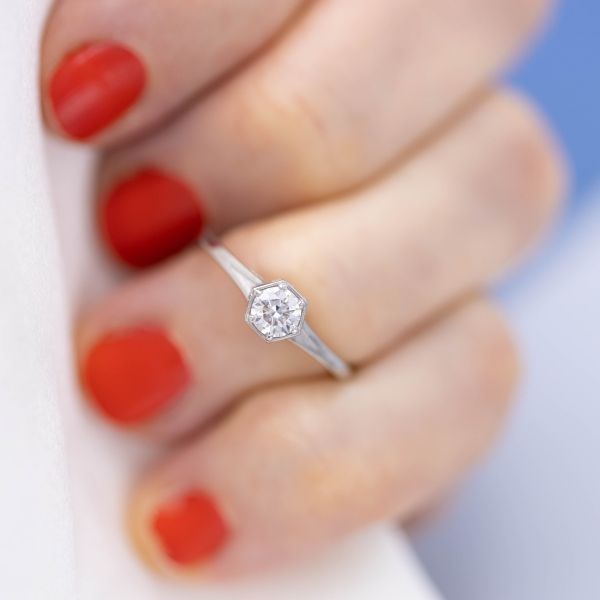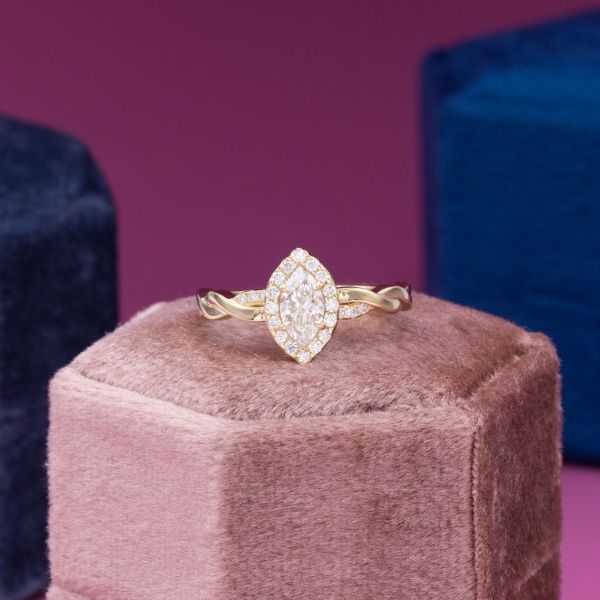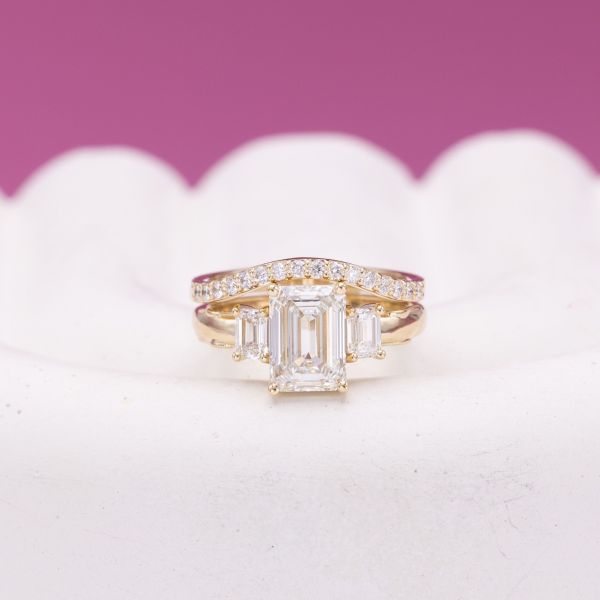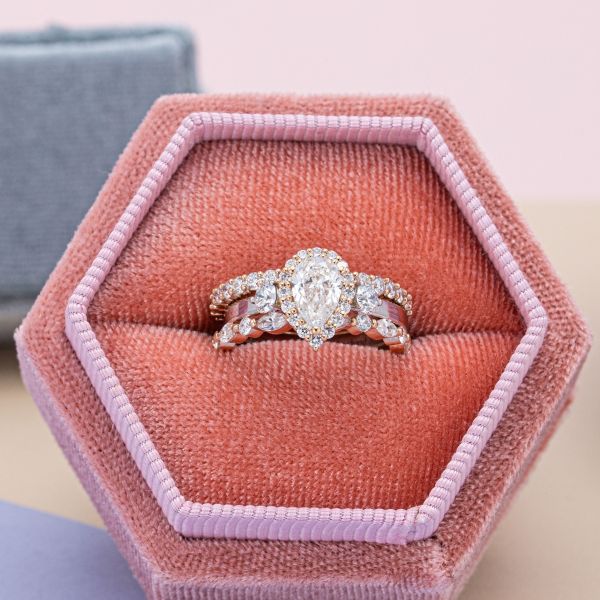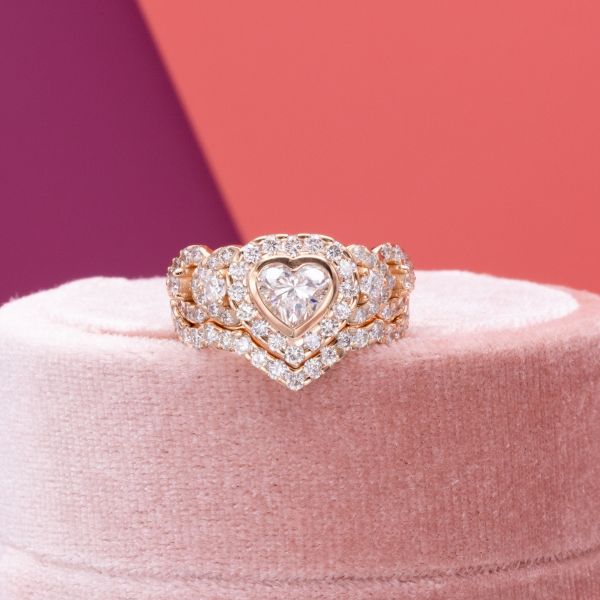Diamond Knowledge
Lab vs. natural diamonds
Lab diamonds are—quite literally—carbon copies of natural diamonds, so what’s the difference?
Are lab diamonds “real” diamonds?
The diamond: sparkly, durable, and often the first thing people think of when visualizing an engagement ring. There was once a time when all diamonds came directly from the earth, but no more! Lab diamonds are steadily rising in popularity, but are they truly as authentic as mined ones? While they’re made in a controlled setting, lab diamonds are chemically the same as mined diamonds and are 100% real.
Still a bit confused? It may be helpful to think of natural and lab diamonds as ice. Natural diamonds are like ice you’d find outside on your driveway, while lab diamonds are the ice cubes in your freezer. They’re chemically identical, but one is natural and harder to source while the other is manmade and plentiful! So let’s dive into the nitty gritty of lab vs. natural diamonds.
Where do diamonds come from?
It’s hard to imagine that natural diamonds are billions of years older than their lab-created siblings, but that’s exactly the case! Let’s look at the origins of each type of diamond.
Natural diamonds
Who loves intense pressure, unbearable heat, and insanely long wait times? Certainly not us—and no, we’re not talking about Disney World—but diamonds thrive in these conditions! Natural diamonds on the market today were actually formed in the earth’s crust over a billion years ago, withstanding extreme heat and pressure which caused carbon to rearrange into diamond. They’re then thrust towards the surface by volcanic kimberlite pipes, where they’re eventually mined, cut, and sold. Pretty cool science experiment, Mother Earth. Nowadays, most mined diamonds come from Africa, Canada, Russia, and Australia.
When you think of the long journey a natural diamond took to become part of the most precious piece of jewelry someone owns, it’s rather romantic! So it’s no surprise that many couples still gravitate toward natural diamonds.
Lab diamonds
The name “lab diamonds” tells you pretty much all you need to know: they’re diamonds that have been created in a lab! Lab diamonds are the result of highly controlled conditions and cutting edge equipment.
Experts use either HPHT or CVD to simulate natural diamond creation in a lab. HPHT, or “High Pressure, High Temperature”, speeds up the natural diamond formation process by a few billion years. Imagine taking carbon, hitting it with high temperatures, and pressing it together, and you’ve got the gist of HPHT. This process takes a lot of energy, but the result is a lab diamond that has endured essentially the same conditions as a natural stone.
CVD—also known as “Chemical Vapor Deposition”—begins with a diamond seed crystal, which is placed in a chamber filled with carbon-rich gas (typically hydrogen and methane). Sounds like some mad scientist type stuff, huh? Then you crank up the temperature and excite the gasses, breaking down their molecular bonds and allowing carbon to grow around the seed crystal. CVD has become the more popular option for creating diamonds, as it’s cheaper and produces high-quality stones.
Comparing appearance and quality
Is it possible to tell the difference between lab and natural diamonds? And are they graded any differently? The short answer to both questions is a resounding “Nope!”.
Can you tell the difference between lab and natural diamonds?
Lab and natural diamonds look the same, and even a gemologist wouldn’t be able to tell the difference between the two with their naked eye. Differentiating between lab and natural diamonds takes reading a stone’s grading report or—in some cases—observing inclusions using a strong microscope. Lab and natural diamonds have identical carbon structures, which makes them exactly the same from their sparkling appearance down to their orderly atoms!
The 4Cs of natural and lab diamonds
Because they have the same physical and chemical properties, lab diamonds are graded with the same scales used to grade natural ones.
Cut
Cut is easily the most important factor of any diamond’s quality, as it’s critical to promoting the light reflection and refraction necessary for sparkle. Experts can cut lab diamonds into the same shapes and cuts as mined diamonds with similar sparkling results. Take a look at the images below and see if you can tell the difference between the natural and lab diamonds—it’s impossible!
Since their rough form is usually more uniform, lab diamonds often have fewer inclusions than natural ones. This means it’s easier to optimize their cut to produce larger diamonds as well as plenty of fire, brilliance, and scintillation. In contrast, natural diamonds can sometimes have inclusions that faceters have to cut around. Despite this, natural diamonds can still receive high cut grades, and an Excellent cut natural stone glitters just as much as an Excellent cut lab diamond. It just requires a little more work to make it possible!
The most popular shape and cut for lab and natural diamonds alike is the round brilliant. That's because this cut maximizes fire, brilliance, and scintillation.
Clarity
Experts grade lab and natural diamonds with the same clarity scale that ranges from Flawless (F) to Included (I1-I3). Controlled laboratory conditions mean that lab diamonds are more likely to receive higher clarity grades than their natural counterparts. However, it’s still possible to find natural stones with high clarity grades, they’re just a bit rarer and will cost more.
Thanks to their formation process, the inclusions you might find in a lab diamond are actually different from the ones you’d notice in a natural stone. Lab diamonds may contain small metallic or graphite inclusions, whereas natural diamonds can have a variety of inclusions from small crystals of garnet or sapphire to breaks in their carbon structure.
That being said, it’s easy to find both lab and natural diamonds that are eye clean. It’s more likely you’ll find lab diamonds with no visible inclusions, but high-quality natural diamonds are still clean to the naked eye.
Color
It’s the same story with color as it is for clarity: lab and natural diamonds receive a color grade from the same scale, ranging from D (Colorless) to Z (Faint Color). Both can be colorless or near colorless, and you can even find colored lab diamonds that come in the same shades and hues as natural ones (think pink, blue, yellow, etc.).
The rarest natural diamond color is red. In fact, red diamonds are so scarce that between 1957 and 1987 absolutely none were reported or graded by major labs! Today, both natural and lab diamonds can be treated to recreate this fiery hue.
Because they’re graded on the same scale, you can expect the same level of colorlessness from a lab diamond with a D color grade as you would from a natural diamond of the same quality.
Carat
Believe it or not, lab diamonds can actually grow to be just as large as natural ones! HPHT diamonds can grow as large as 10 carats, while CVD diamonds can reach 6 to 9 carats. But, this still doesn’t beat the ability of natural diamonds to grow to insane sizes over their billion year formation process. In fact, the “Cullinan I” diamond is a staggering 530 carats!
While you may not be shelling out the cash for a diamond that size (a measly $400 million), it’s still pretty awesome to know there are few limitations on lab diamonds when it comes to making them as similar to natural ones as possible. The 1 to 3 carat range is popular for both natural and lab diamonds, but you’ll get a better deal with lab stones (more on that later!).
Other considerations when deciding between lab and natural diamonds
Lab and natural diamonds are the same physically, chemically, and visually, but here are a few other factors to consider beyond just looks:
Price and value
We’ll be frank: lab diamonds cost about 80% less than natural stones of similar quality. Lab diamonds require less labor to produce than natural diamonds, and this is reflected in their pricing. For instance, a 1 carat mined diamond can cost around $4,000-$9,000, but you’ll only spend about $450-$1,200 for a lab diamond of equal quality.
The reasonable price of lab diamonds means it’s easier to afford intricate settings with side and accent stones, or you can choose a larger diamond for less. But if you’re dreaming of a classic diamond solitaire, then a natural diamond may be the one for you!
When looking at value over time and resale potential, natural diamonds actually have a slight advantage. As the supply of lab diamonds grows and production methods become more efficient, the prices of lab-created stones are steadily declining. So if you’re looking to resell your ring at some point, a lab diamond may lose value over the years, but you can expect a natural diamond to retain 50%-100% of its value in the same timeframe.
Now, keep in mind that this isn’t really important if you intend to keep your ring in the family forever! It’s just something to consider if you plan to upgrade or sell your ring down the line.
Durability
If lab and natural diamonds are physically and chemically the same, they should be equally durable, right? That’s exactly right! Gemologists use the Mohs scale of hardness to grade durability, which ranges from 0 (the most delicate) to 10 (the hardest). Both lab and natural diamonds are perfect 10s, meaning they can withstand daily wear with ease.
Because both stones are highly scratch resistant, you don’t have to worry much about sudden encounters with a hard surface. Taking care of your engagement ring is extremely important, but both lab and natural diamonds can definitely handle a little more wear and tear than other stones!
Sustainability
It’s no secret that diamond mining isn’t a harmless process, and anyone who’s seen Blood Diamond knows that gemstone mining once came with conflict. The environmental impact and working conditions surrounding mined diamonds have come a long way over the decades, so there’s no need to lose sleep at night if you choose a mined diamond. But some couples looking for an ethically-sourced stone still want to look elsewhere, and lab diamonds may be their ideal choice.
Lab diamonds have a much smaller carbon footprint, as they don’t require as much energy or water to create. As such, they offer more long-term sustainability and favorable working conditions for those involved in the creation and purchase of lab diamonds. While most natural diamonds today are conflict free, you can be sure your stone is guilt-free and ethically sourced when choosing a lab diamond.
But don’t get us wrong: we still love natural diamonds! At CustomMade, we only sell conflict-free diamonds from suppliers that comply with the Kimberley Process, which was established in 2003 to prevent diamond purchases from financing civil wars in Africa and across the globe. You can find more information on our conflict-free diamonds here.
Lab vs. natural diamonds: it’s a personal choice
At the end of the day, what matters most when choosing between lab and natural diamonds is which one better suits your needs, and they’re so similar that no one will know the difference unless you tell them. Some adore the complex process natural diamonds undergo during their formation, but others love the idea of a diamond created through human ingenuity with less global impact. And if you’re still unsure whether a diamond is really the right stone for you, there are plenty of diamond alternatives that you may love even more!
About CustomMade
CustomMade designs and creates one-of-a-kind, custom engagement rings and fine jewelry. Each piece we create is inspired by you, designed for you, and made just for you.

